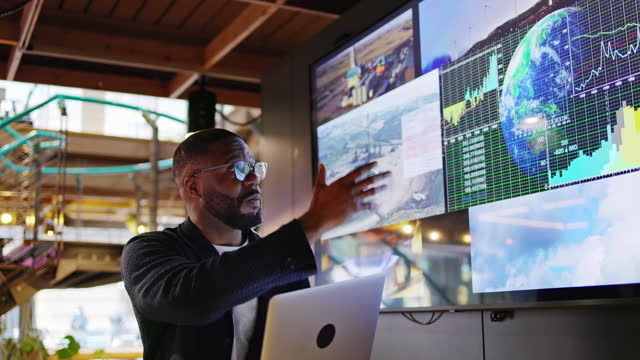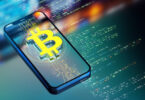Beyond the Screen: The Effect of Augmented Reality on Daily Life
In the ever-evolving landscape of technology, augmented reality (AR) has emerged as a transformative force, promising to redefine our perception of the world around us. Augmented reality transcends traditional screens, blending digital and physical realms to create immersive experiences that enhance, interact with, and often transcend our everyday lives. As we delve into the multifaceted impact of augmented reality, it becomes apparent that we are on the cusp of a paradigm shift that extends far beyond the boundaries of our screens.
The Essence of Augmented Reality
At its core, augmented reality involves the integration of digital information, such as images, sounds, and data, into the user’s real-world environment. Unlike virtual reality, which creates entirely immersive digital environments, augmented reality overlays digital content onto the existing physical world. This overlay can take various forms, ranging from simple graphics and information to more complex 3D models and animations.
Transforming Education and Training
One of the most significant impacts of augmented reality is observed in the realm of education and training. Traditional methods of learning are being reimagined as AR technologies offer interactive and dynamic educational experiences. Imagine students dissecting a virtual frog on their desks or exploring the solar system in their classrooms. Augmented reality brings subjects to life, making abstract concepts tangible and fostering a deeper understanding of complex topics.
In professional training, AR is revolutionizing how individuals acquire new skills. From medical students practicing surgeries on virtual patients to factory workers receiving real-time guidance on complex machinery, augmented reality is bridging the gap between theoretical knowledge and hands-on experience. This not only accelerates the learning curve but also enhances retention through experiential learning.
Enhancing Retail and Shopping Experiences
Augmented reality is reshaping the landscape of retail by offering consumers a more immersive and interactive shopping experience. Virtual try-on applications, for instance, enable customers to see how clothing items look on them without physically trying them on. Home furnishing apps allow users to visualize how furniture would fit into their living spaces before making a purchase.
In physical stores, AR-powered navigation systems guide shoppers to specific products, provide additional information through digital overlays, and even offer personalized recommendations based on individual preferences. These innovations not only enhance the overall shopping experience but also blur the lines between the online and offline retail worlds.
Revolutionizing Healthcare
The impact of augmented reality on healthcare is profound, with applications ranging from medical training to patient care. Surgeons can use AR to visualize critical information, such as 3D models of organs and blood vessels, during procedures. This aids in precision and minimizes risks, ultimately leading to better patient outcomes.
In patient care, AR technologies can be employed to enhance rehabilitation processes. For example, patients recovering from a stroke can use AR applications that project virtual tasks, encouraging movement and exercise in a gamified and engaging manner. This not only promotes adherence to rehabilitation routines but also makes the process more enjoyable for patients.
Augmented Reality in Entertainment and Gaming
The entertainment industry has embraced augmented reality as a tool to engage audiences in innovative ways. Augmented reality games, such as Pokémon GO, have captivated millions by blending the virtual and physical worlds. Users explore their surroundings to discover digital creatures and objects, creating a unique and immersive gaming experience.
In the world of live events and performances, AR is being employed to create spectacular visual effects. Musicians, for instance, can use AR to overlay dynamic animations and graphics onto their stage setups, transforming concerts into visually stunning experiences. This convergence of digital elements with live performances blurs the boundaries between reality and fantasy.
Navigating the World with AR
Augmented reality has become an indispensable tool for navigation and exploration. Navigation apps leverage AR to provide users with real-time overlays of directions, points of interest, and relevant information as they navigate unfamiliar environments. This not only simplifies the navigation process but also enhances situational awareness.
Tourism and travel are also experiencing a shift with the integration of augmented reality. Visitors to historical sites can use AR apps to see virtual reconstructions of ancient structures overlaid onto the current landscape. This immersive approach to exploration enriches the travel experience by offering historical context and a deeper understanding of cultural heritage.
Challenges and Considerations
Beyond the Screen While the potential of augmented reality is vast, it is not without challenges. Technical hurdles, such as ensuring seamless integration with real-world environments and addressing issues of latency, remain areas of focus for developers. Privacy concerns, particularly regarding the collection and use of personal data in AR applications, also demand careful attention to ensure responsible and ethical use of the technology.
Moreover, the widespread adoption of augmented reality depends on factors such as the availability of compatible devices, the development of compelling content, and the establishment of industry standards. As these elements fall into place, augmented reality is poised to become more accessible and integrated into our daily lives.
The Road Ahead
Beyond the Screen The trajectory of augmented reality suggests a future where the boundaries between the physical and digital realms continue to blur. As technology advances, augmented reality is likely to become more seamless, with the potential to be integrated into everyday objects and environments. Wearable AR devices, such as smart glasses, are already on the horizon, promising a more immersive and hands-free AR experience.
In conclusion, Beyond the Screen the impact of augmented reality on everyday life is multifaceted and transformative. From education and healthcare to retail and entertainment, AR is reshaping how we interact with the world around us. As the technology continues to evolve and find new applications, we are witnessing the dawn of an era where the digital and physical realms coexist in harmony, enhancing our experiences and opening up possibilities that were once confined to the realms of imagination. The journey beyond the screen is not just a technological progression but a redefinition of our relationship with reality itself.







[…] technologies play a crucial role in biodiversity conservation and environmental monitoring. Remote sensing technologies, satellite imagery, and data […]